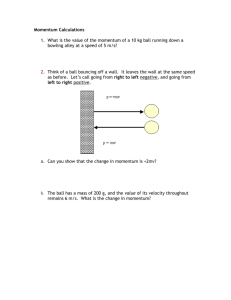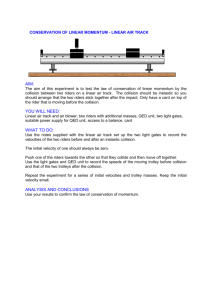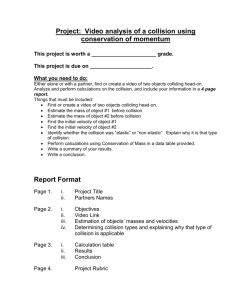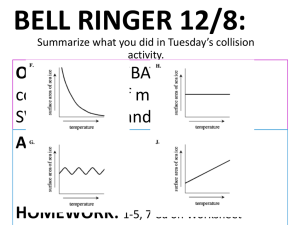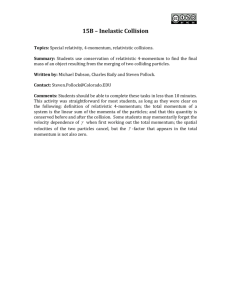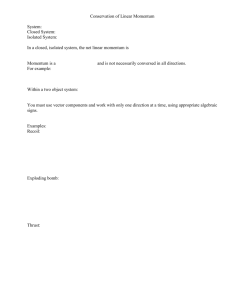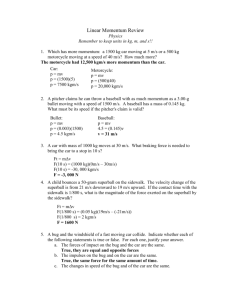Perfectly Inelastic Collisions - Prep
advertisement
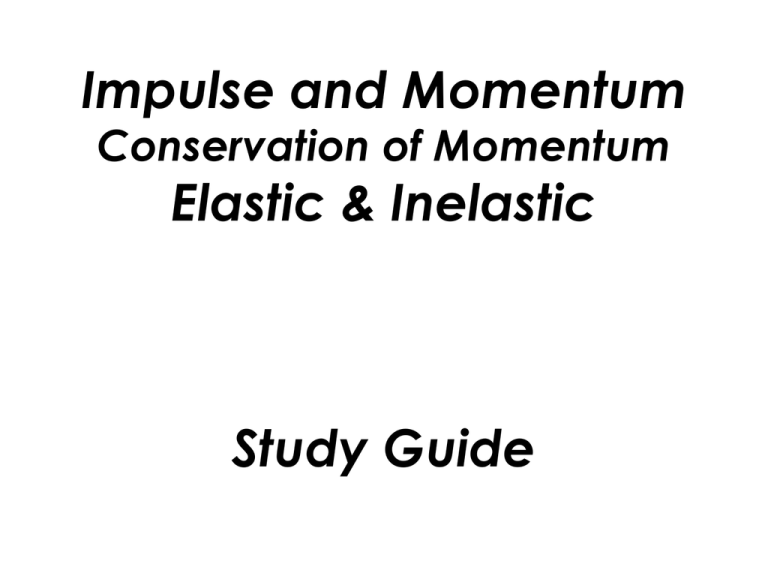
Impulse and Momentum Conservation of Momentum Elastic & Inelastic Study Guide Momentum is Conserved in an isolated system. “Isolated system” means that there are no external forces acting on the thing. Collisions can be classified according to the energy interaction that takes place: • Elastic collision kinetic energy is conserved • Inelastic collision kinetic energy is not conserved • Perfectly inelastic collision objects stick together and have the same velocity. We begin with a two-body collision where each object has some velocity prior to the collision. Both objects have momentum equal to the mass times the velocity. The total momentum before the collision is: After the collision the velocities will have changed. The total momentum will be: We know that the momentum before must equal the momentum after So here is an equation which will work for any two-body collision: Perfectly Inelastic Collisions: These are collisions where the two objects stick together after they collide. The key thing to remember here is that after the collision both objects stick together and have the same velocity. After the collision the velocities will have changed. We know that the momentum before must equal the momentum after: Now we can solve for final velocity Use concept of the conservation of mechanical energy to solve this initial velocity of the box right after The bullet is immersed. • A 0.05 kg bullet collides and sticks to a 2.5 kg stationary block suspended from a string. The bullet and block swings to a maximum height of 12 cm. What was the initial speed of the bullet? • A 10.0 gram bullet traveling horizontally strikes and sticks in a 80 gram stationary air track glider. If the combined bullet/glider moves at 20.0 m/s. What is the bullet's pre-impact velocity ? Challenging Problem An incident ball A of mass 0.10 kg is sliding at 1.4 m/s on the horizontal tabletop of negligible friction shown above. It makes a head-on collision in w1ith at target ball B of mass 0.50 kg at rest the edge of the table. As a result of the collision, the incident ball rebounds, sliding backwards. at 0.70 m/s immediately after the collision. (a) Calculate the speed of the 0.50 kg target ball immediately after the collision. (b) Calculate the horizontal displacement. (use concept of motion to solve this problem)

